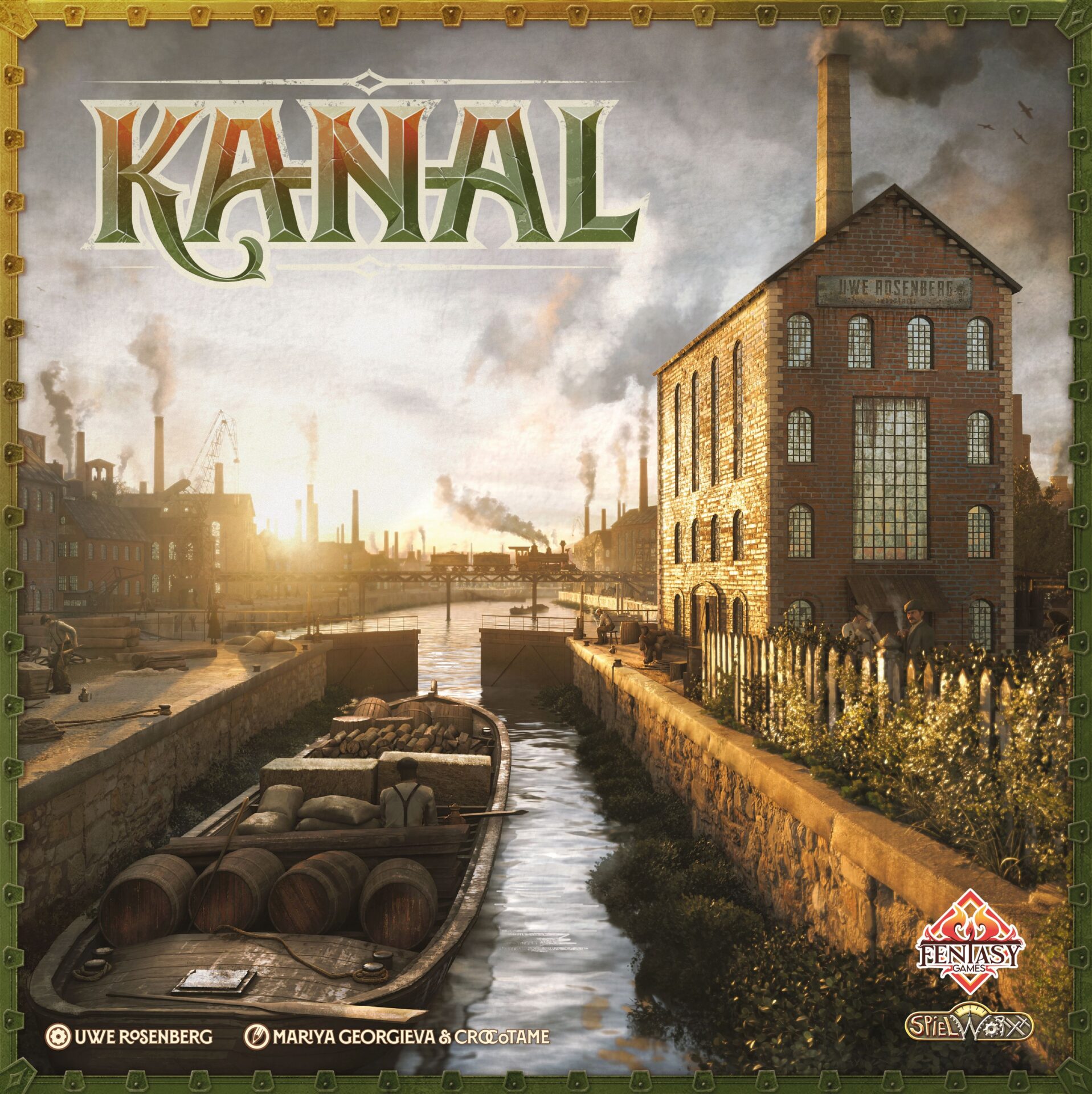A review copy of Kanal was kindly provided by Hachette Boardgames UK. Thoughts & opinions are my own.
Long-time readers of mine will know I’m a big fan of Uwe Rosenberg. I was gutted when Oranienburger Kanal hit crowdfunding a couple of years ago because I couldn’t justify the crazy high price including shipping. Imagine my delight then, when Sylex and friends picked it up, tidied up the rules, and gave it new life as Kanal. As a fan of the building tableau puzzles in Uwe’s games like Nusfjord (read my review here) and Atiwa (and the Atiwa review is here), and the clever resource wheel from Glass Road and Black Forest, I was very excited to try Kanal.
I was not disappointed.
Kanal is only for one or two players, and while both are good ways to play, I think that – like with Nusfjord – I prefer to play this one solo. Uwe’s best games are like trying to solve a jigsaw puzzle while the new pieces are being made and given to you while you complete it, and Kanal is another in this vein.
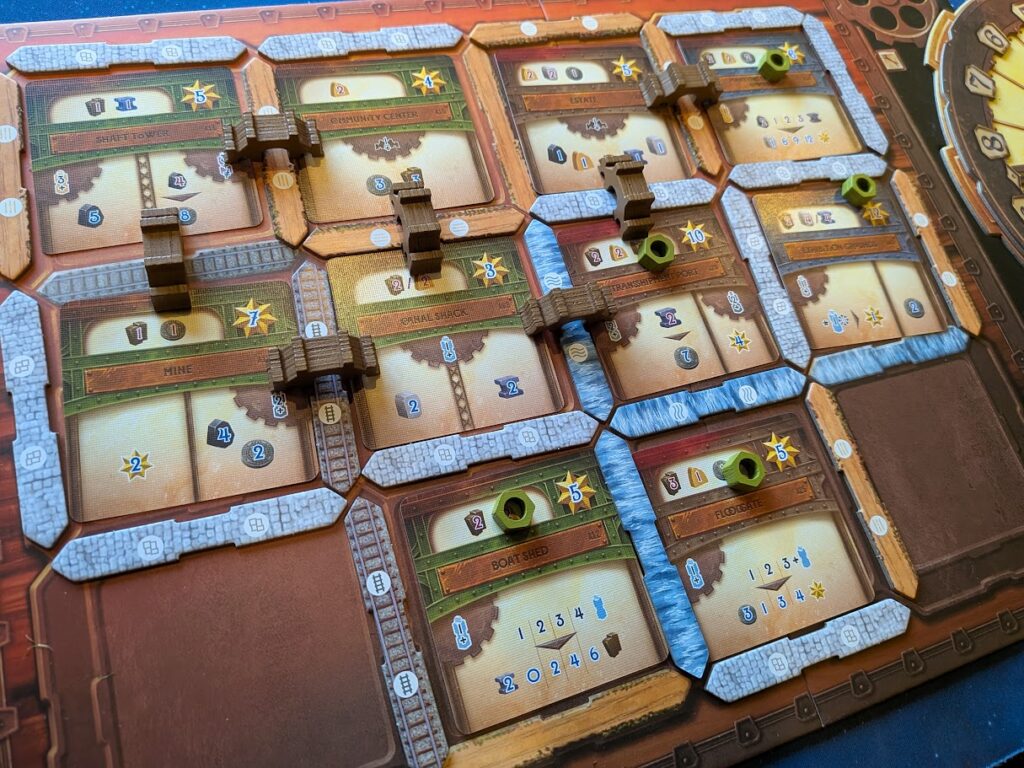
The principle of the game is pretty simple. You’re creating your own version of the original canal that was created in Oranienburg in the 19th Century. It created much easier shipping around the Havel River, which in turn led to a small boom in industry and trade. Each player has a pretty dull board with spaces for 12 square building cards in a 4×3 grid, and narrow spaces around these squares to build paths, roads, railways, and the titular canal.
Actions, such as gaining resources, building roads and canals, and buying and placing building cards from the market, are chosen from a shared action board. A bit like the one in Nusfjord, but with far fewer options, and no ability to copy an existing, claimed action. The way the resources are handled is my favourite part of the puzzle. Kanal uses a clock-like wheel, like Glass Road did before it. Raw resource (clay, wood, and coal) amounts are tracked by moving their markers clockwise away from one of the two hands on the wheel. When you convert them to finished products (steel and stone), you turn the hands of the wheel, which reduces the number of stored resources, but at the same time it moves the other hand away from the finished goods, increasing their numbers.
It’s such a novel, clever way of demonstrating raw materials being used to create other products, and it means each player only needs one resource marker, instead of a pile of wooden pieces.
Synergies
Despite it being a truly ugly, early 2000s business buzzword, synergy really is the best way of describing what you’re aiming for in Kanal. You only get two or three turns in each round, and it’s one of those games where using one of those turns to just generate resources feels like a waste. You’ve got all those building spaces to fill, all those paths, railways and canals to make, not to mention the bridges you build to cross the various thoroughfares.
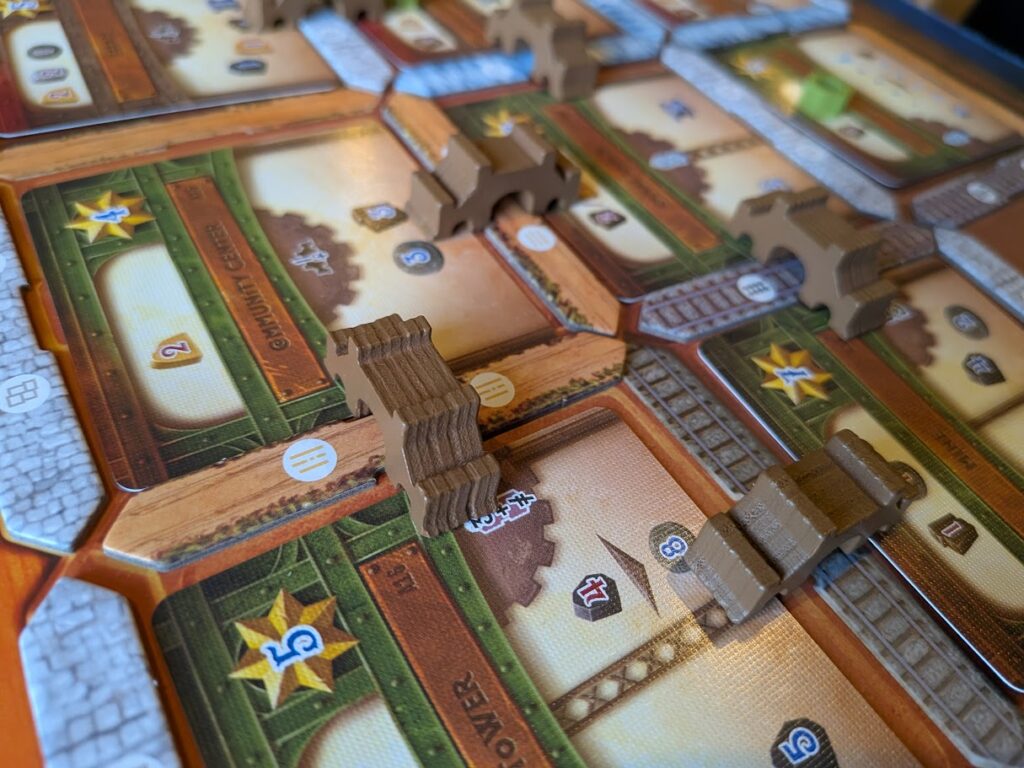
So what can you do?
Well, this is a Euro game, and you’re not just building these structures because they look pretty. They have a purpose. It’s an industrial era, and you’re building industrial buildings, soooo – let’s industry! The buildings you build come from three different stacks, each of which is a subset of three different decks, and each of those three decks comes from a choice of six decks! If you’ve played an Uwe Rosenberg game like Hallertau (read my review of that right here) before, the idea of having variable decks to keep the game fresh won’t be new to you.
Anyway, each building on your player board can be activated twice, and in a twist you might not be expecting, initially buying and placing the building isn’t one of the activation triggers! One activation comes when a building is completely surrounded by four routes, and the other when a second bridge connects the building to another building. It’s a really unusual system, and I like it. It feels new and different, and it really stretches your planning and strategising muscles. Bridges are an especially fun puzzle because you can only build them when there are two buildings to connect, and the route they cross has to already be in place.
Table for two, sir, or are we dining alone tonight?
Uwe Rosenberg’s games – the big box games at least, we’re not talking Bohnanza here – are often as much fun solo as they are with other players. Kanal is pretty unique in his ludography, because it’s either for two players or solo play. While the experience is largely the same, there are some notable differences.
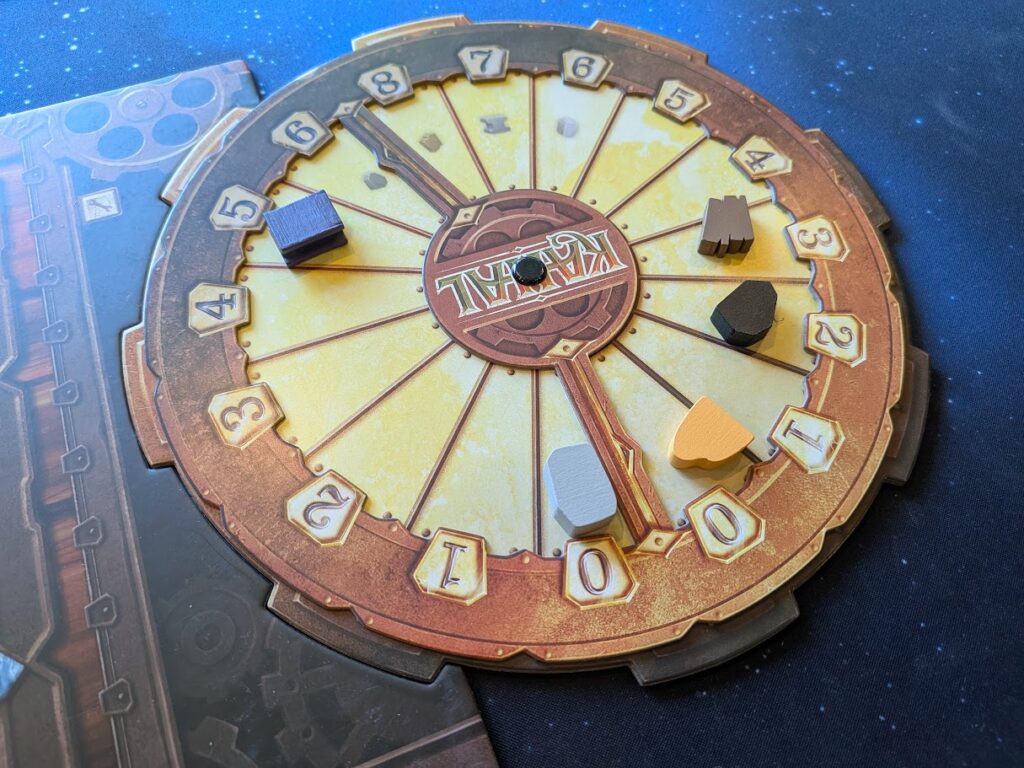
Being an Uwe game, there’s plenty of action blocking. If someone places their action marker on an action space, you can’t place yours there. And as I metioned before, unlike games like A Feast For Odin or Nusfjord, there is no space which copies the action from a previously claimed space. First-come, first-served. A two-player game can be a lesson in mitigation, unless you manage to separate your cycles early in the game to make sure you’re building routes while the other person is placing buildings – that sort of thing.
It gets a teeny bit easier later in the game, because the existing action spaces have new parts revealed as the game goes on, meaning there might be an improved, older action which suddenly does the thing you need to complete your plans. It’s still a tight old game though.
Solo play is what I prefer from Kanal. In fact, it’s what I prefer in most of his games. It uses his tried and tested action space blocking, but with a difference. Instead of leaving the action selection markers on the board between rounds, this time the grey marker (which is usually an extra action for whoever chose the action which awards first player rights for the following round) migrates its way across the board from round to round. The structures market automatically churns too, so there are always at least two buildings replaced between rounds, which in turn drives the end of the game.
Enjoying this article? Consider supporting me.
What it means to you, dear player, is that you get all four action selection markers, both red and blue, to use every round. That’s right, instead of two actions, you get four! Obviously, this makes the game markedly different to the two-player version, as you only normally get two actions per round (plus an extra if you’re the first player). It also means you’ve got access to every type of action each round, with the exception of wherever the neutral marker is, but the big difference is that you know where that blocker will be from round to round, whereas in the two-player game, you’re at the mercy of wherever the other person chooses to drop their markers.
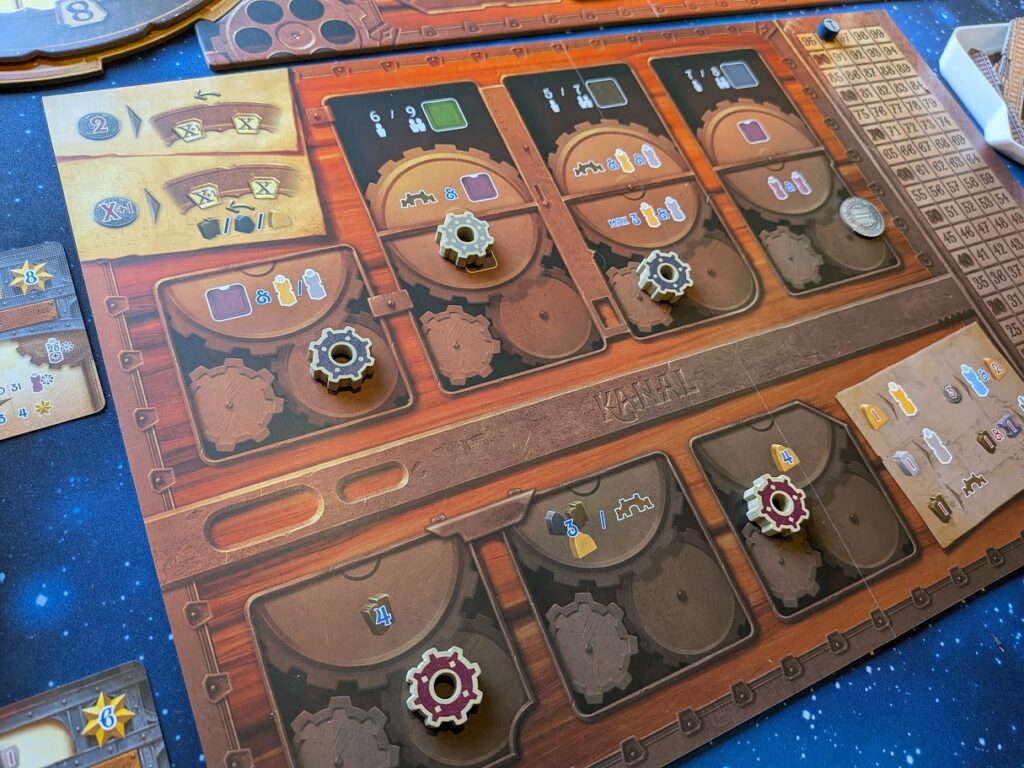
It’s hard to tell for sure yet, as I need to play it more, but it might just usurp Nusfjord as my favourite solo Rosenberg game.
Final thoughts
Kanal is great. Let me get that out of the way. In my opinion, Kanal is a fantastic game, but my opinion comes with some caveats attached. If you’re used to middle-weight Euro games that give you tons of stuff and let you decide how you use it, Kanal might be a shock to the system. The game is super mean with its resources, and you need to plan really cleverly to make it work. Looking at the buildings on offer, gauging which benefits each would give you if you manage to activate them, and figuring out how that will feed into the game later on, is tough.
Even if you’re a fan of Uwe Rosenberg games, it might not click with you. The resource wheel takes a bit of getting used to, and the smorgasbord of actions on offer is far leaner than other games like A Feast For Odin, Hallertau, or even Nusfjord or Atiwa (read my review of that bat-tastic game here). It’s a tight, difficult puzzle of optimisation, and some people don’t enjoy that restrictive feeling. If you have a regular group of three or four people, it’s a non-starter. The components are a mixed bag, too. The cards and resource wheels are great, the wooden components are really nice, but the route tiles are really, really thin. I understand why, there are 160 of them after all, but they feel a bit cheap compared to the rest of the game.
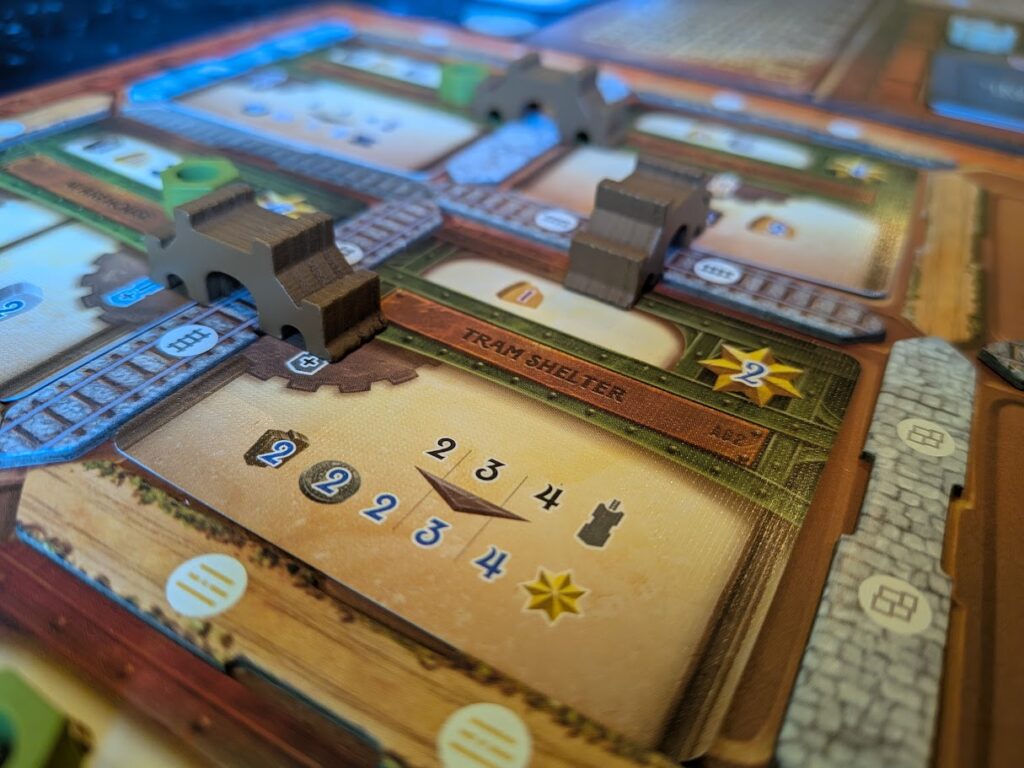
Still, despite my niggles and complaints, Kanal is a keeper for me. It has all the Uweisms I love in his games. A choice of different cards and buildings to use each time I play. A really nice system of resource gathering and conversion. An open-ended approach to play. On-the-fly strategy based on what comes with each flipped card. Plus, it’s quick. It’s quick to setup and tear down. It only takes 45 minutes to play. So many duelling games now are kinda lightweight, which I don’t have a problem with; you only have to look at my recent reviews of D.O.T and Solstis to see that. So to have a two-player game which really gets your brain going is great. For me, though, Kanal is another of those games I’ll return to again and again when I have an hour to myself and want to get away from the screen. A delicious solo puzzle ice cream with Rosenberg ripples throughout.
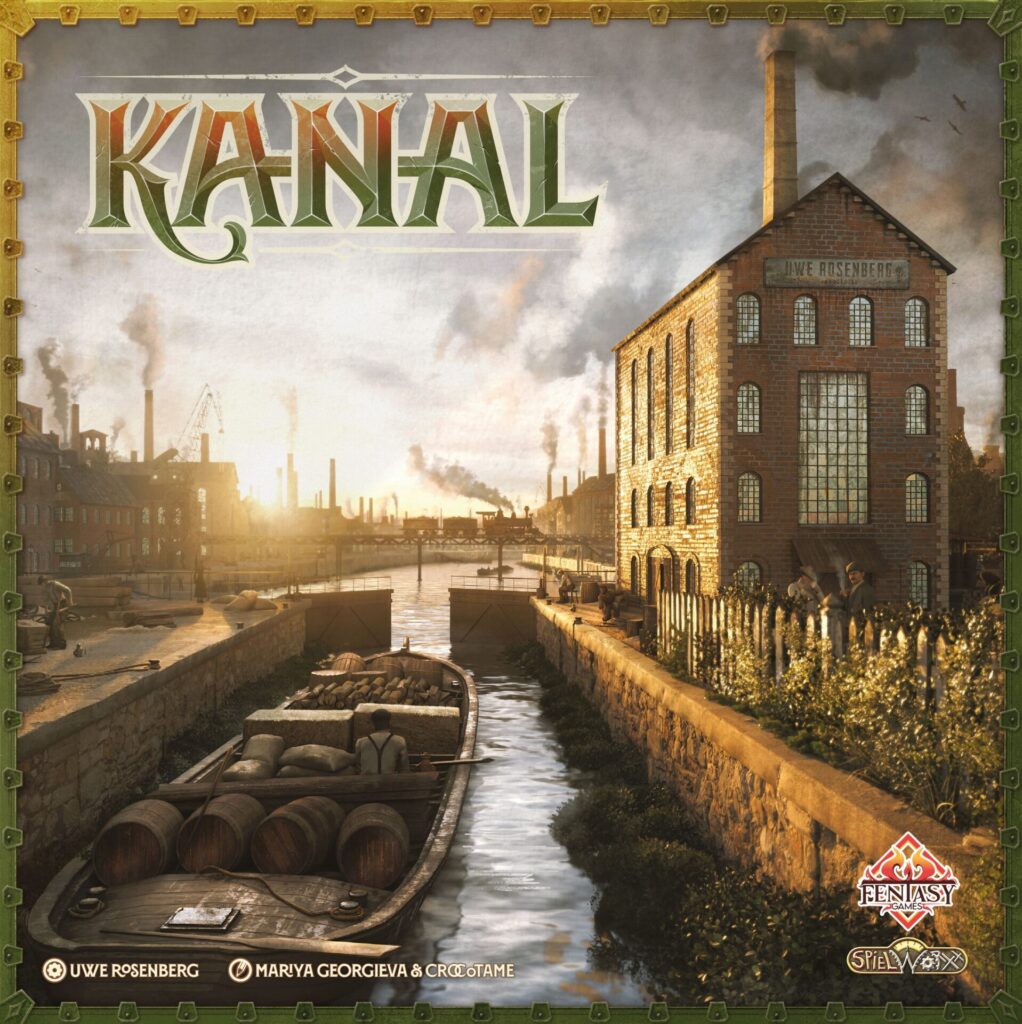
Kanal (2024)
Design: Uwe Rosenberg
Publisher: Spielworxx, Sylex, Fentasy Games
Art: Crocotame, Mariya Georgieva
Players: 1-2
Playing time: 45 mins
